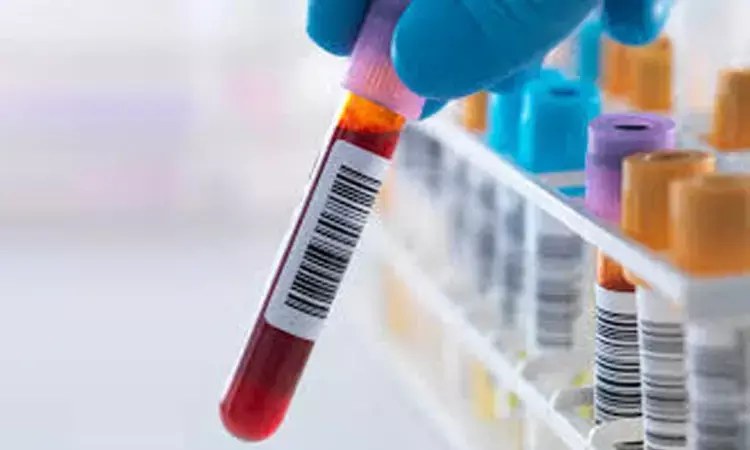- Home
- Medical news & Guidelines
- Anesthesiology
- Cardiology and CTVS
- Critical Care
- Dentistry
- Dermatology
- Diabetes and Endocrinology
- ENT
- Gastroenterology
- Medicine
- Nephrology
- Neurology
- Obstretics-Gynaecology
- Oncology
- Ophthalmology
- Orthopaedics
- Pediatrics-Neonatology
- Psychiatry
- Pulmonology
- Radiology
- Surgery
- Urology
- Laboratory Medicine
- Diet
- Nursing
- Paramedical
- Physiotherapy
- Health news
- Fact Check
- Bone Health Fact Check
- Brain Health Fact Check
- Cancer Related Fact Check
- Child Care Fact Check
- Dental and oral health fact check
- Diabetes and metabolic health fact check
- Diet and Nutrition Fact Check
- Eye and ENT Care Fact Check
- Fitness fact check
- Gut health fact check
- Heart health fact check
- Kidney health fact check
- Medical education fact check
- Men's health fact check
- Respiratory fact check
- Skin and hair care fact check
- Vaccine and Immunization fact check
- Women's health fact check
- AYUSH
- State News
- Andaman and Nicobar Islands
- Andhra Pradesh
- Arunachal Pradesh
- Assam
- Bihar
- Chandigarh
- Chattisgarh
- Dadra and Nagar Haveli
- Daman and Diu
- Delhi
- Goa
- Gujarat
- Haryana
- Himachal Pradesh
- Jammu & Kashmir
- Jharkhand
- Karnataka
- Kerala
- Ladakh
- Lakshadweep
- Madhya Pradesh
- Maharashtra
- Manipur
- Meghalaya
- Mizoram
- Nagaland
- Odisha
- Puducherry
- Punjab
- Rajasthan
- Sikkim
- Tamil Nadu
- Telangana
- Tripura
- Uttar Pradesh
- Uttrakhand
- West Bengal
- Medical Education
- Industry
Blood tests can predict the risk of liver cirrhosis

Researchers at Karolinska Institutet in Sweden have found in a new study that repeated measurements of the biomarker FIB-4 in the blood every few years can predict the risk of developing severe liver disease.The risk of liver cirrhosis increases if the levels of this biomarker rise between two testing occasions. The new research has been published in the Journal of Hepatology.
Fat accumulation in the liver is common and is often seen in people with obesity or diabetes. In the worst case, fatty liver can lead to cirrhosis or liver cancer. It is unusual for this to occur but in those affected, symptoms often only occur at a late stage when there is no available treatment.
"It is difficult to predict the risk of cirrhosis, although you can get some guidance in using regular blood tests that measure liver damage," says lead author Hannes Hagstrom, hepatologist at the Karolinska University Hospital and docent at Karolinska Institutet. "Therefore, we wanted to investigate whether what is known as the FIB-4 score can increase the accuracy of the identification of people at high risk, in particular with information from repeated measurements."
The new study shows that repeated sampling and measurements of the FIB-4 score, rather than measuring FIB-4 on one sole occasion, can increase the prediction of future liver cirrhosis. The researchers used the AMORIS cohort that contains laboratory test data in a very large population, surveyed between 1985 and 1996. More than 40,000 people had blood test data for FIB-4 from several sampling occasions. They were followed in national registers to identify those who developed cirrhosis after up to 27 years.
The main finding was that the risk increases in people where the FIB-4 score rises between two testing occasions and decreases when it falls. In this way, almost half of those who were later affected by cirrhosis could be identified. One problem, however, was that the accuracy was relatively low, with a risk of false positive tests.
The study also established that it took a long time to develop cirrhosis, and that it may be enough to recalculate the FIB-4 score at intervals of several years.
"We show that this biomarker is useful for identifying people in primary care with an increased risk of cirrhosis who may need to be more carefully investigated and to exclude people who do not need this," says Dr Hagstrom. "But the method needs to be further developed to reduce the risk of false positive findings, which can lead to unnecessary examinations in healthy people."
For further reference log on to:
Hannes Hagström, Mats Talbäck, Anna Andreasson, Göran Walldius, Niklas Hammar. Repeated FIB-4 measurements can help identify individuals at risk of severe liver disease. Journal of Hepatology, 2020;
Dr Kamal Kant Kohli-MBBS, DTCD- a chest specialist with more than 30 years of practice and a flair for writing clinical articles, Dr Kamal Kant Kohli joined Medical Dialogues as a Chief Editor of Medical News. Besides writing articles, as an editor, he proofreads and verifies all the medical content published on Medical Dialogues including those coming from journals, studies,medical conferences,guidelines etc. Email: drkohli@medicaldialogues.in. Contact no. 011-43720751


